-
Posts
4,730 -
Joined
-
Last visited
-
Days Won
7
Content Type
Profiles
Forums
Blogs
Gallery
Events
Store
Posts posted by Gordon Craig
-
-
Gentlemen,
I need to coprrect my earlier statement about the time frame for the cocakde that I said was worn up to the mid 70s. Obviously I was mistaken and for that I appologize. Don't know how I could have made such a dumb mistake! Obviously it is of the time frame first listed in the post. For reference purposes here is a cap and cap badge for the Bulgarian Communist era up to the early 70s. The interior shot is not very good and I'll add a better one when the cap arrives.
Regards,
Gordon

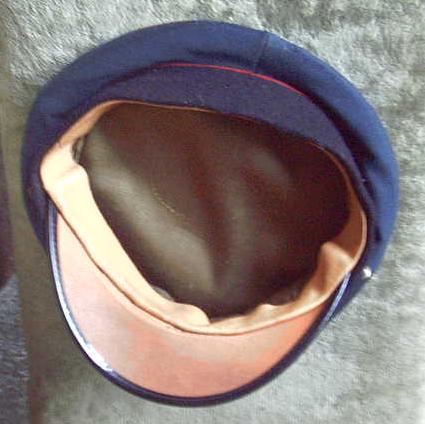

 0
0 -
Soviet,
Thanks for the response. I figured that was where you bought the hat. Now if he only had a Generals hat I'd be all set!
Cheers,
Gordon
0 -
Gentlemen,
Military personnel assigned to the Military Traffic Control Corps wore a special protective helmet while carrying out their duties. The helmet is similar, but not exactly the same, in shape as the regular military helmet. It is made of layers of fibreglass material and has an entirely different liner from the metal armed forces helmets. The liner is more like a cloth cap which fits over the head with a section that comes down over the back and side of the head then buckles under the chin. The section that fits over the neck and face is of a white plastic material on the exterior. There are four holes in the section that buttons under the chin that should line up with the wearers ears. Very similar to a motorcycle helmet which purpose it may serve as well. The helmet is painted white overall with the exterior being smooth while the interior is of a rough texture. The front section of the liner has a leather sweat band and the chin strap is also of leather. The makers name "Hungaria" of Budapest is on a label sewn to the top of the liner. The liner is held in place by four sets of two brass rivets equally space around the helmet. There are black bands around the helmet with a blank spot in the front between the bands for the Armed Forces Cocakde. This particular cockade is of the flat surface variety and gold in colour indicating wear by a commissioned officer. The large F below the cockade stands for "Formgalomszab?lyaz?s". These helmets may be found with a different number of black bands indicating assignment to different sized formations. They are;
One Band-assigned at the company level
Two Band-assigned at the Battallion level
Three Band-assigned at the Regimental level.
Regards,
Gordon
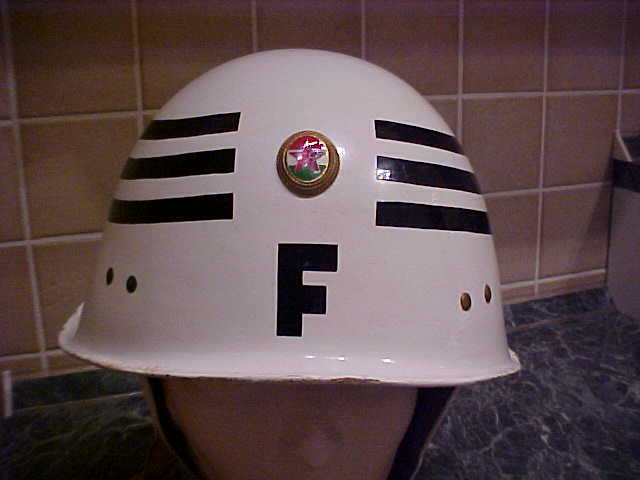
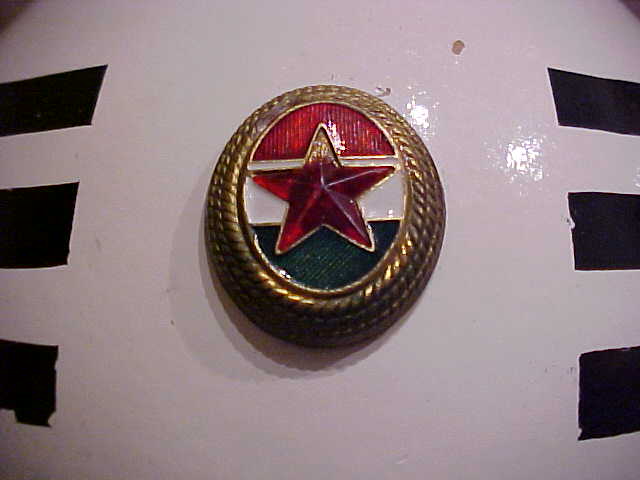



 0
0 -
Gentlemen,
I should have mentioned earlier in this thread that the letters MN in the date stamp in the hat stand for "MAGYAR N?PHADDSEREG" - HUNGARIAN PEOPLE?S ARMY. It has been standard Hungarian military practice for some time to use this type of marking. The name of the armed forces changes from time to time and therefore so do the letters in the top half of the rectangle. Therefore, the letters in the top section must be correct for the date appearing in the lower right section of the stamp.
Regards,
Gordon
0 -
Gents,
An up-dates. In my first post I said the letters on the back of the nut were "FV". I was mistaken. They are actually "PV".
Regards,
Gordon
0 -
Belaruski,
Welcome to the GMIC. Looking forward to your posts and sharing your area of expertese with us.
Regards,
Gordon
0 -
Soviet,
Nice shots of the helmet and cap. Would you post a picture of the front of the cap please. The helmet reference site is good. The pop up is annoying though.
Regards,
Gordon
0 -
These next three badges are listed as being from the 1970s in Bragg and Turner's book "Parachute Badges & Insignia of the World". The photos are from a recent ebay auction. Again, I don't have any info on the badges accept that they do exist. This style of badge was produced for many different military trades. They have a hole below the leaves and the numerals are attached there by a nut and screw arrangement.
Regards,
Gordon

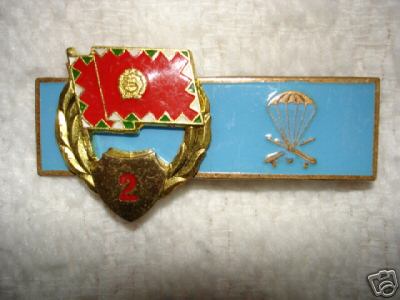
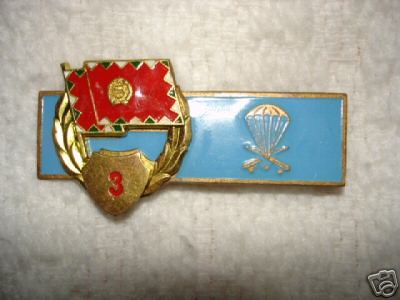





 0
0 -
So that you will not mistake Communist era para badges with current ones, here is a cased modern Hungarian para badge that sold on ebay a few weeks ago. This badge was introduced in the early 1990s and following that some current cloth para badges only issued for wear with the camouflage uniforms worn by the Hungarian Reconnaissance unit in Afganistan.
The next badge I only have a picture of. The picture was taken from the European Paratroopers site. It is listed there as a Hungarian Para badge, with no other info, but it is from the Communist era.

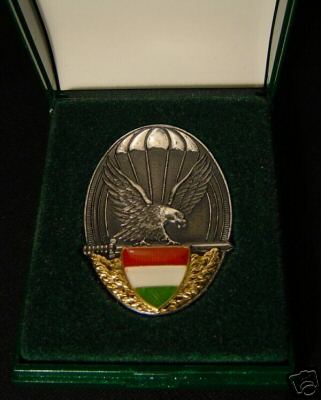
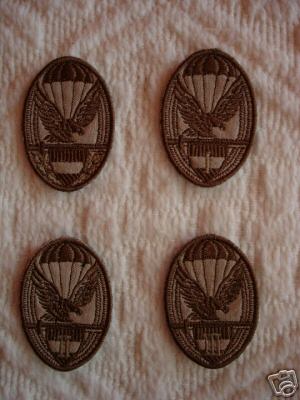


 0
0 -
Gentlemen,
I'd like to start a thread on Hungarian Communist era para badges. Even here in Hungary there is little information on these badges so please feel free to add your comments and post any badges that you may have so we can all become more informed.
The first badge I will post a picture of was called a "Master Parachutists Badge" by the vendor but Charles has heard it called the "Free Fall" badge and when you see it you will know where the name comes from. Hopefully, someone will know the correct terminology for this badge.
The badge measures 71mm from wing tip to wing tip (2 13/16 inches) 36mm high (1 3/4 inches). The number one at the bottom of the badge seems to indicate there are more levels to this particular badge, especially as the leaves and shield with the number are a seaparte piece that have been attached some how to the wings, and the gold colour may indicate there are other grades such as silver or bronze. The method of attachment is also unusual for a Hungarain badge and looks more Russian than anything else. The nut has the letters "FV." on it. There are no other markings on the badge. I suspest the badge may have been manufactured in Russia. If I had come across this badge outside of Hungary I would have attributed it to Russia. However, at the same time that I bought this para badge I bought a Hungarian Excellent Border Guard badge with the same attachment configuration including the same initials on the nut. On to pictures of the badge.
Regards,
Gordon
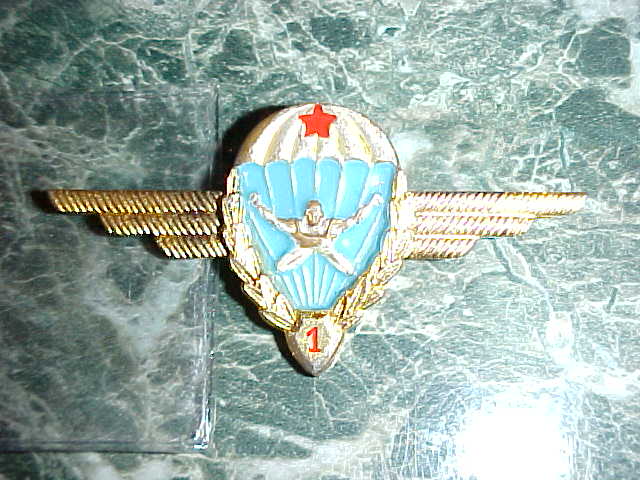


 0
0 -
Now for the cap with the cap badge installed.


 0
0 -
Here are some photos of the cap badge itself. The prongs that are soldered to the back of the badge are made of a very soft metal and bend easily. Despite their pointed ends, one needs to make a whole in the cloth before they can be put into place and folded over.
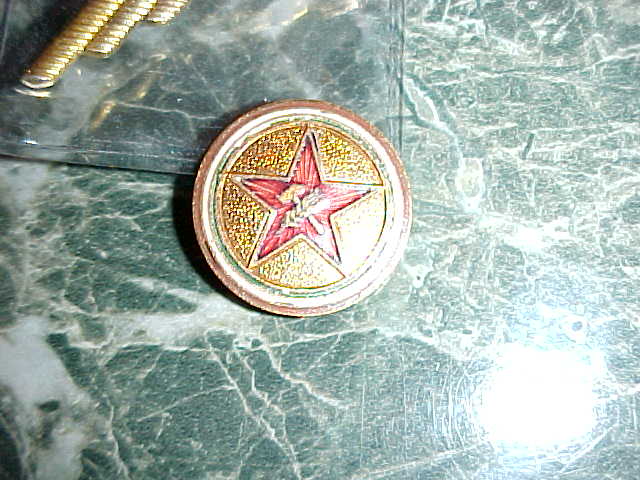




 0
0 -
Gentlemen,
Lately a number of 1950s dated Hungarian Military winter hats have been release to the public. None of these caps have hat badges as they were never issued. Luckily for me, while visiting a dealer a couple of days ago, I came a cross a Rakoci cap badge that would go on one of these caps. I had done some research on these caps, via archived pictures etc., and thus was able to recognize it when I saw it.
It is a round badge 26mm in diametre (one inch)with three concentric rings coloured, from the outside in, red, white and green. The colours appear to be painted on and the majority of the red paint is missing. It could have been cold enamel. The three rings surround a bronze, stippled field. In the centre of the field is a star of red (cold) enamel with rays extending out to the edges of the star. In the centre of the star is the Rakoci symbol of a wheat sheeve across a hammer in bronze. I believe the bronze colour of this badge indicates wear by an enlisted man as per Hungarian custom.
This is the only cap badge like this I have seen but I beleive it belongs on the winter hat. I have seen a wedge cap, overseas cap for our American friends, with the same red star device on the front without the surounding material of this badge. I'll post pictures of the cap and the badge in this thread.
The cap has numerous stamps on the interior and unless you know what to look for you would have difficult dating the hat. The date stamps is a rectangle divided into an upper and lower section. The upper section contains the letters "M R". The lower half is divided into two sections as well. The left hand section contains large numerals "24" and in the right hand section is the date "1952". The exterior of the cap is khaki wool while the interior is a lighter shade of brown and is of quilted cotton. The fur front of the cap is held in place by one snap fastener at the top on each side. The side flaps tie together on top.
Regards,
Gordon
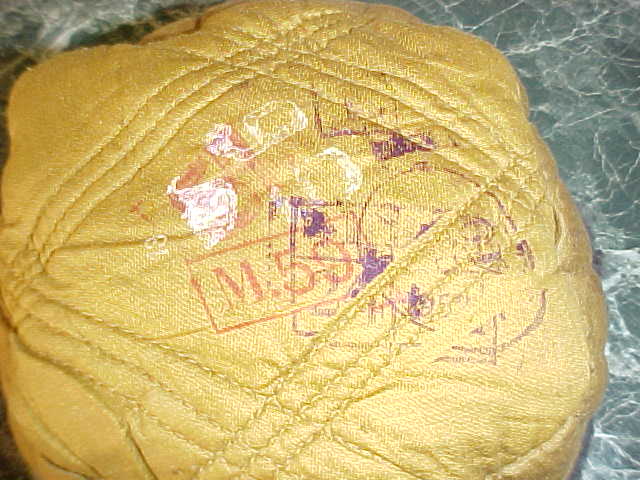







 0
0 -
Is this an enlisted cockade or an officers?
Best,
Doc
Doc,
This is a Bulgarian Officers cap badge as used until the early 1970s.
Regards,
Gordon
0 -
The last of the series of pictures of the enlisted man's cap.
Gordon


 0
0 -
Gents,
Charles has asked about the measurements of my communist era Border Guard enlisted man?s peaked cap. All of the individual measurements of the cap are very close to that of the Generals cap but on the same flat surface it measures only 13.5 cm to the top of the crown. Overall, it is also the same shape as the general?s cap.
The Hungarian Boarder Guards traditionally use green as their arm of service colour. This is indicated on this cap by the green band around the crown and the green cap band. Enlisted men wore plastic chin straps, bronze cap buttons, and a bronze cap cockade. NCOs wore these same items in silver.
The cap cockade on this hat is believed to be of the early type. There are two types of cockades on communist era Hungarian caps. Those with a red star raised above the surface, as is clear in this photo, and those where the cockade is flat and the red star is below the surface of the cockade. My research has not revealed in what time period these two cockades were worn. I believe the change was made from the raised ones to the flat ones because of breakage to the stars. You often find the raised stars either loose so they will turn, as is the case on this cap, or with the tips of the stars broken off.
Something I didn?t mention in my first posts was that the sweat shield in communist era caps and post era cap is the same shape but that the post communist period sweat shields are physically, and noticeably, larger. Also, why go to these lengths to detail the differences between the caps of these two eras? For one main reason, there are lots of caps being released by the Hungarian Ministry Of Defence and they do not have a cockade attached. Since the caps are not marked, and look almost identical, physical dimensions are the only way you can tell the hats from the two different eras apart. I mentioned earlier that in 1990 the only real change was the cap badge. Hats worn during the communist era were still worn until new uniform regulations were written and the new uniforms and caps were produced. Here are some pictures of the Border Guard cap.
Regards,
Gordon
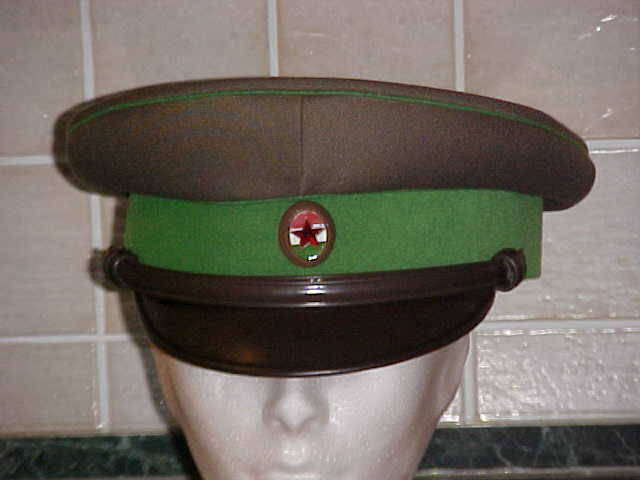
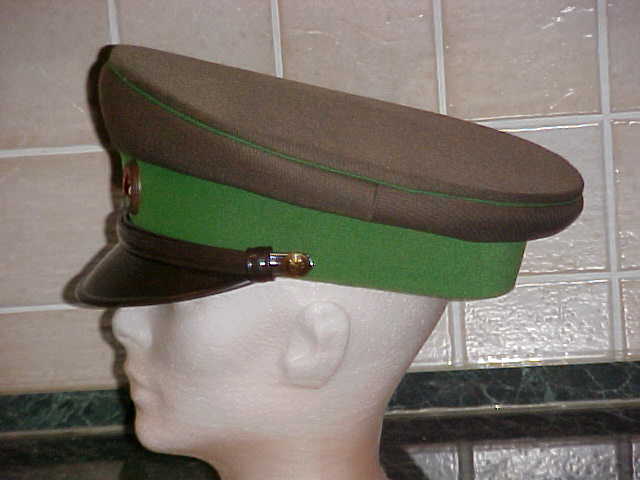
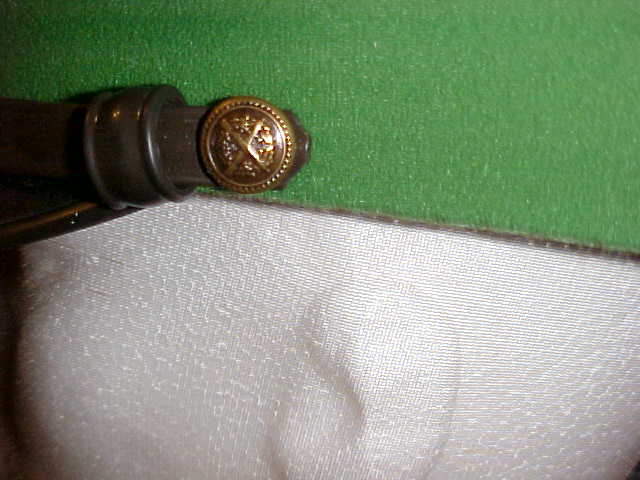





 0
0 -
Next I will post pictures of a current musician officers cap. There two reasons for posting this particular cap.
1-It is similar to a generals cap because of the red stripe around the crown. It has a red cap band and is often sold as a general's cap from the communist era. Musician officer's peaked caps from the communist era looked almost exactly the same in design.
2-As a size comparison between officers hats worn during the period 1956-1989 and those worn now to enable collectors to tell a communist era officers hat from a post communist era cap. In particular a general's cap.
When the first elected government, following the communist regime, took office in 1990 few changes took place to the actual uniforms worn by the Hungarian armed forces. Other than cap badge changes things remained relatively the same. The buttons remained the same. Over time since then uniforms have undergone some changes. One of those was in the officers peaked caps. When viewed separately the caps from the two periods appear identical. Howere, in fact the later caps are lighter in colour and are slightly taller. When sitting on a flat surface, the communist era hat measures 14 cms (5.5 inches) from the tip of the peak to the top of the crown. The current cap measures 15.8 cms (6.5 inches) from the tip of the peak to the top of the crown. Here are some photos of the current cap for comparison purposes.
Regards,
Gordon

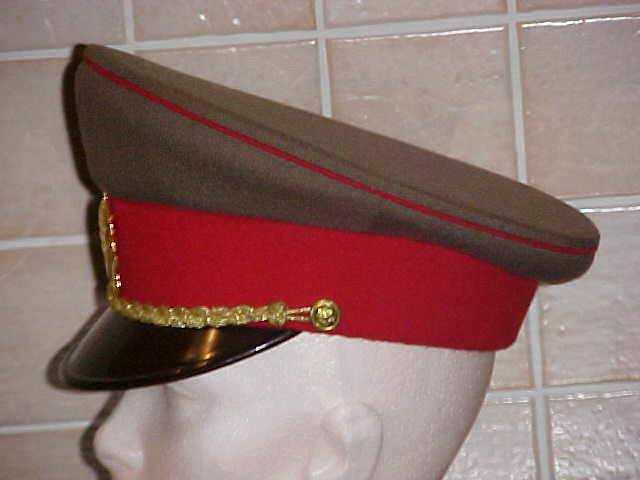






 0
0 -
Next are pictures of the front and rear of the general's cap badge. The badges are held in place by three prongs. Two on either side at the bottom and one at the top on the star. In the example shown the top pin has been broken off but you can see where it was attached.

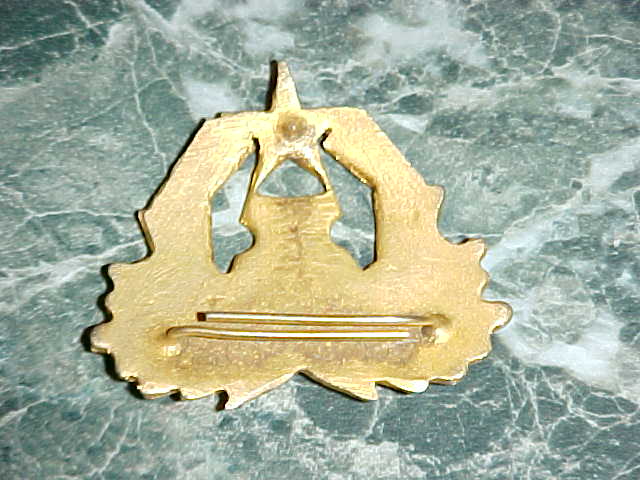



 0
0 -
Gentlemen,
In this thread I will show pictures of a Hungarian Army General's peaked cap from the communist period. The caps were medium brown in colour with a lighter brown plastic peak. The cap band is a different material than the crown of the cap. More like a velvet texture than the other material. There is a thin red band around the crown. The interior is lined with a red nylon type of material. There is a plastic sweat shield with a slot for the name. There are no makers marks on the sweat shieled or anywhere else in the cap. The chin strap is made of three strands of gold fibre attached to two split pin type gold buttons with a raised pattern of oak leaves and crossed rifles. Officers below the rank of general also wore a chin strap of three gold strands but these strands were slightly thinner than those used on a generals cap. The split pin buttons were the same as those used on the standard officers cap. The general's cap badge was quite different from the regular officer cockade. Below are pictures of the front, side, interior and a close up of the split pin buttons.
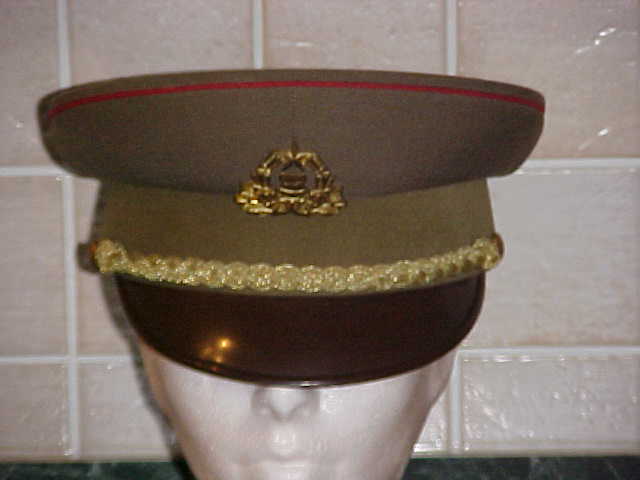
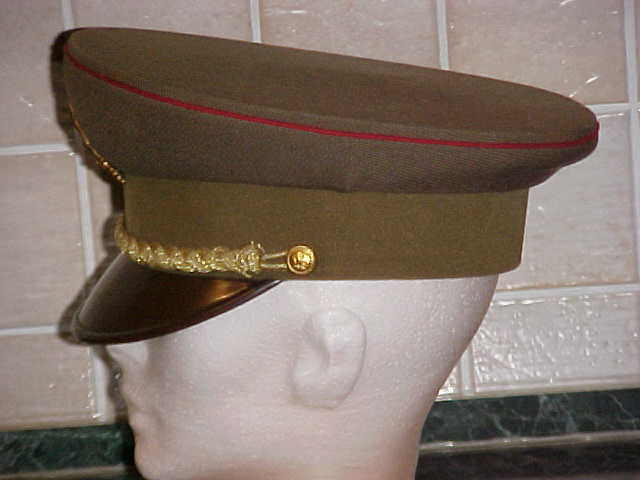

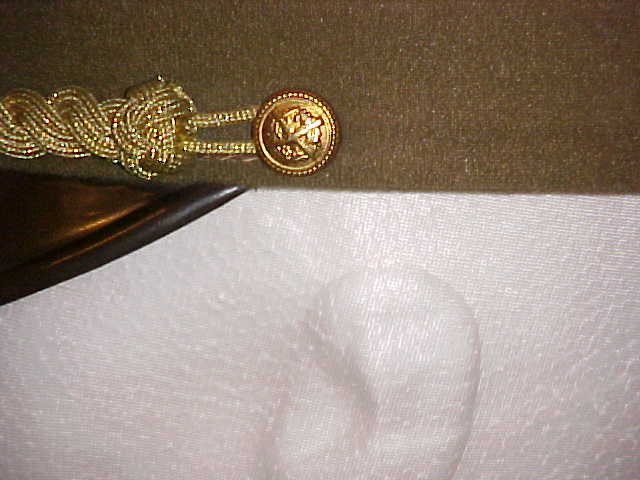







 0
0 -
Ulsterman,
The MHKB site is inded a treasure. I've visited it often and downloaded an amazing amount of useful information from it.
Cheers,
Gordon
0 -
Jeff,
There is a section of the Military Museum that is open a couple of times a week for research. I haven't been yet but it is probably time to go and see what is available.
Regards,
Gordon
0 -
So that those of you who may not be familiar with the hats Charles and I were refering to, here are some photos of the light grey hat worn by the militia during the final communist years in Hungary.
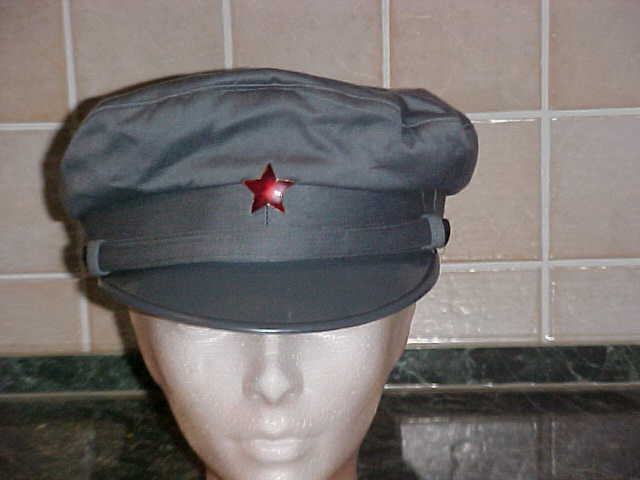
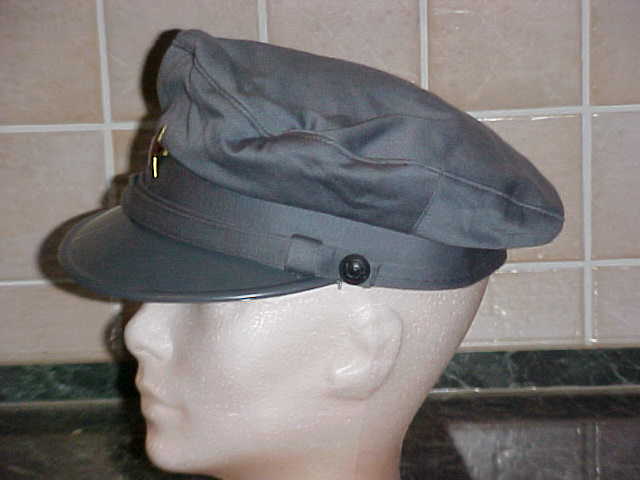
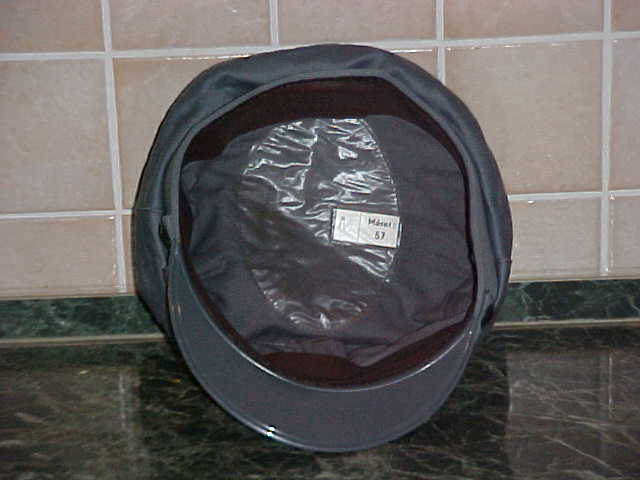


 0
0 -
Charles,
Looking at these photos again, th e militia guys seem to be wearing dark hats to match the colour of their shirts. True? I have one of the common light grey ones but have never seen a dark gray, or are they black hats?
Dan,
Post war rank charts for the militia guys would really be appreciated.
Cheers,
Gordon
0 -
Hunyadi,
Great fotos! Especially the camo ones. I don't have any reference for the overcoat type white camo. The others are familiar and welcome in my research project. I have been after a Militai workers uniform top go with my hat for years. Lots of hats around but uniforms seem scarce. Do you have any rank charts for the Hungarian guys you posted pictures of? They were certainly wearing some interesting collar patches in the pictures you posted.
Regards,
Gordon
0




Hungarian Post War Parachute Badges
in Central & Eastern European States
Posted
Gents,
Another update on my previous posts. The para badge with the figure of a paratrooper in free fall is the Free Fall badge from the Communist era and as Charles has indicated in his posts all para qualifications led to this badge but I do not know what the criteria was to be awarded this badge.
I now own a Basic Para Badge from the Communist era and can post pictures. On the view of the rear of the badge you will see two hooks. Small semicircular disks were hung from these hooks to indicate the total number of jumps in increments of ten. There are also badges like this one with the numerals indicating the number of jumps shown on the badge at the bottom where the two sets of leaves come together. There also similar badges with scrolls underneath, but a part of the badge, bearing the words "OKTATO"-INSTRUCTOR; and "MESTERUGRO" (I've left out the accents in this word) which literally translates as Master Jumper.